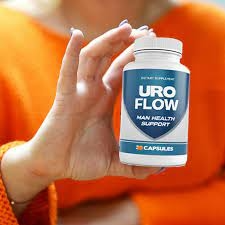Urinary problems are among the most common health concerns affecting both men and women, especially as they age. Issues like frequent urination, weak urine flow, or sudden urgency can disrupt daily life, lower sleep quality, and cause emotional stress. For many individuals, these symptoms point to one of three primary conditions: Lower Urinary Tract Symptoms (LUTS), Benign Prostatic Hyperplasia (BPH), or Overactive Bladder (OAB).
While visiting a clinic for diagnosis is important, modern technology has made it easier than ever to conduct reliable preliminary testing from the comfort of home. One such innovation is the home uroflow test—a simple, noninvasive, and effective way to measure urinary flow and help detect potential underlying problems.
This comprehensive guide explores how a home uroflow test works, who it’s for, how it helps in managing LUTS, BPH, and OAB, and how it revolutionizes urinary health tracking without the need to visit a clinic.
Understanding Urinary Disorders: LUTS, BPH, and Overactive Bladder
Before exploring the benefits of home uroflowmetry, it’s crucial to understand the conditions it helps monitor.
Lower Urinary Tract Symptoms (LUTS)
LUTS is a broad term referring to problems related to urination. These can include difficulty starting urination, weak urine stream, hesitancy, dribbling, or a constant urge to urinate. LUTS affects both men and women but is more prevalent in older adults, particularly men.
LUTS can be categorized into two main types:
- Voiding symptoms: Related to difficulty emptying the bladder (e.g., slow flow, straining, or incomplete voiding).
- Storage symptoms: Related to the bladder filling process (e.g., urgency, frequent urination, or nocturia—nighttime urination).
Benign Prostatic Hyperplasia (BPH)
In men, many LUTS cases stem from BPH, a harmless but bothersome enlargement of the prostate gland. As the prostate grows, it presses against the urethra, restricting urinary flow. This compression slows down urination, causes the bladder to work harder, and often leads to incomplete emptying.
Symptoms may include:
- Weak urine stream
- Prolonged urination
- Interrupted flow
- Frequent urination, especially at night
BPH is not life-threatening, but its progressive nature makes early monitoring essential to prevent complications.
Overactive Bladder (OAB)
OAB is a condition marked by a sudden, involuntary urge to urinate, often causing leakage before reaching the bathroom. It’s not always caused by an enlarged prostate but by bladder muscle overactivity. OAB can disrupt normal daily activities, cause sleep interruptions, and significantly affect quality of life.
The Role of the Uroflow Test
The uroflow test (or uroflowmetry) is a non-invasive diagnostic procedure that measures the speed, volume, and pattern of urine flow. It’s one of the simplest yet most insightful ways to understand how well the urinary tract functions.
How It Works
When a person urinates into a special device called a uroflowmeter, the machine records:
- The flow rate (mL/sec)—how quickly urine is expelled.
- The volume of urine (mL)—the total amount passed.
- The voiding time—how long urination lasts.
- The flow curve—a graph depicting how flow changes over time.
A healthy flow curve typically starts slowly, peaks in the middle, and gradually tapers off. Irregularities in this curve help physicians identify potential issues like urethral obstruction, prostate enlargement, or weak bladder muscles.
Traditional vs. Home Uroflow Testing
Traditionally, uroflowmetry is performed in a hospital or urology clinic where the patient urinates into a specialized toilet connected to an electronic measuring device. However, this environment can feel uncomfortable and unnatural, affecting test accuracy.
That’s where home uroflowmetry transforms the experience. With compact, portable devices such as iUFlow or iPeeWell, patients can now perform the test conveniently at home, in privacy, and under natural conditions.
The Rise of Home Uroflowmetry
Home uroflowmetry has gained significant popularity among both patients and urologists. It provides the advantage of monitoring urinary behavior in a relaxed environment, offering more realistic and consistent results than clinical settings.
Why Home Uroflow Testing is Effective
- Comfort and Privacy: Many individuals feel anxious or embarrassed during hospital-based uroflow tests, which can alter their flow pattern. At home, users are more relaxed, resulting in more accurate readings.
- Convenience: No need to schedule multiple clinic visits. Patients can take the test anytime and share results digitally with their doctor.
- Long-Term Monitoring: Home uroflowmetry allows repeated measurements over days or weeks to track progression of symptoms and assess treatment effectiveness.
- Cost-Efficiency: Reduces repeated clinical test costs, making it ideal for ongoing management of chronic conditions like BPH or OAB.
- Clinical Accuracy: Modern home uroflow meters provide precise, medically reliable data comparable to that obtained in clinical uroflowmetry tests.
How a Home Uroflow Test Works
Most home uroflow devices are designed for simplicity and hygiene. Here’s how a typical test works:
Step 1: Setup
Place the device on the toilet bowl as instructed (for example, the iUFlow or Minze FlowTest). The device is wireless and connects to a smartphone app via Bluetooth.
Step 2: Urination
Urinate naturally into the device, just as you would normally. The uroflowmeter starts measuring automatically—recording flow rate, duration, and total volume.
Step 3: Analysis and Reporting
After completion, the device transmits the data to a mobile app, generating an easy-to-read report. The digital report can then be shared directly with a urologist or primary care provider for analysis.
The process is completely non-invasive, takes less than five minutes, and does not require any medical assistance.
When to Consider a Home Uroflow Test
Doctors often recommend uroflowmetry for individuals showing symptoms such as:
- Weak or intermittent urine flow
- Difficulty starting or stopping urination
- Frequent urination, especially at night
- Urgent need to urinate
- Prolonged urination time
- Feeling of incomplete emptying
These symptoms are common in LUTS, BPH, and OAB, making home uroflow testing a valuable self-monitoring tool.
Reading the Results
The results from a home uroflow test are usually presented as a graph and a numeric report. Understanding basic metrics can help patients interpret data before discussing it with their healthcare provider.
- Maximum Flow Rate (Qmax): Indicates peak urine flow rate. Normal ranges for men are around 15–25 mL/s; lower values suggest obstruction or reduced bladder strength.
- Average Flow Rate: Reflects the overall flow stability.
- Voided Volume: Total amount of urine passed (typically at least 150 mL for accuracy).
- Voiding Time: Duration of urination. Prolonged times may indicate blockage or weak muscles.
- Flow Curve Shape: Normal curves are bell-shaped; flattened or irregular shapes can indicate uroflow abnormalities.
Doctors use these results to diagnose and monitor conditions like urethral stricture, prostate obstruction, or bladder underactivity.
Home Uroflowmetry for LUTS
For individuals with general lower urinary tract symptoms, home uroflow testing provides valuable objective data to support symptom diaries. Instead of subjective self-reporting (“I think my stream is weak”), the test quantifies performance, enabling targeted treatment.
Regular monitoring helps doctors adjust medications, recommend lifestyle changes, or decide if surgical intervention is necessary.
Home Uroflowmetry for BPH
Uroflowmetry is one of the cornerstones for assessing Benign Prostatic Hyperplasia progression. Because prostate obstruction affects urinary flow directly, monitoring changes in flow rate over time gives precise feedback on whether the condition is stable, improving, or worsening.
Patients using home uroflow tests can:
- Track improvements after starting BPH medication like alpha-blockers.
- Assess the impact of lifestyle adjustments (hydration, diet, exercise).
- Detect early deterioration, prompting timely doctor visits.
This proactive approach can help men avoid severe complications like acute urinary retention.
Home Uroflowmetry for Overactive Bladder
For those with Overactive Bladder, the goal is not just measuring flow but monitoring the frequency and urgency of urination. Modern devices with app integration (like iUFlow) create digital voiding diaries, automatically logging:
- Urination times and volumes
- Episodes of urgency or leakage
- Sleep patterns are disrupted by nocturia
When combined with medical advice, this data improves accuracy in diagnosing OAB and personalizing treatment plans.
Clinical Advantages of Home Uroflow Testing
- Improves Diagnostic Accuracy: Real-world data collected at home eliminates the effects of “clinic anxiety,” offering a truer picture of bladder function.
- Monitors Daily Variability: Multiple recordings reveal day-to-day changes in urination, which may go unnoticed in a single clinic test.
- Enhances Doctor-Patient Collaboration: Patients can easily share results through secure online platforms, improving communication and decision-making.
- Encourages Early Intervention: Detecting flow reduction early enables timely medical action, preventing progression of prostate or bladder disorders.
- Empowers Patients: By tracking their urinary performance, individuals gain better awareness of their condition and become active participants in their own healthcare journey.
Preparing for a Home Uroflow Test
Although simple, preparing properly ensures the most accurate results.
Before the test:
- Drink enough fluids (about 750–1000 mL) one to two hours before testing.
- Avoid alcohol and caffeine before testing, as they affect urine flow.
- Ensure a comfortably full bladder but not uncomfortable pressure.
- Sit or stand naturally while urinating into the device.
- Do not use tissue or interfere with the device during urination.
During the test:
- Relax and urinate normally.
- Avoid movements that may interrupt flow or affect readings.
After the test:
- Check your app or report to verify a valid result (minimum void volume should exceed 150 mL).
- Repeat testing across multiple days for a more comprehensive assessment.
Interpreting Trends Over Time
One of the most powerful features of home uroflowmetry is trend tracking. Rather than relying on single results, cumulative data across days or weeks reveal meaningful patterns.
For instance:
- Decreasing flow rate trends may indicate worsening prostate obstruction.
- Stable flow readings suggest medication or therapy is effective.
- Frequent nocturnal voids can confirm overactive bladder or fluid intake issues.
Your healthcare professional can use these insights to modify treatment or suggest further investigation.
The Future of Urology: Remote & AI-Assisted Monitoring
Home uroflowmetry is part of a growing wave of digital healthcare innovation. With AI algorithms analyzing flow curves, remote consultation becomes faster and more accurate.
Upcoming devices may automatically flag abnormal voiding patterns, predict potential urinary obstruction, and provide tailored lifestyle suggestions—all from your smartphone.
As more patients embrace home testing, healthcare providers can deliver more personalized care with continuous and accessible data streams.
Frequently Asked Questions (FAQs)
- Is the home uroflow test accurate?
Yes. Modern wireless uroflowmetry devices like iUFlow and iPeeWell are clinically validated and provide results comparable to in-office tests. - Does it hurt?
No, the test is completely painless. It simply involves normal urination into a specialized device. - Who can use home uroflowmeter tests?
Anyone experiencing urinary symptoms such as weak flow, frequent urination, or incomplete emptying can use these devices after consulting a healthcare provider. - Can women use home uroflow devices?
Absolutely. Though BPH is male-specific, women with LUTS or OAB can also benefit from uroflowmetry for bladder function tracking. - How often should the test be performed?
Initially, multiple daily tests for several days provide baseline data. Subsequently, repeat weekly or monthly, depending on your doctor’s recommendation.
Final Thoughts: A Smarter Way to Manage Urinary Health
The home uroflow test represents a major step forward in urinary health management. Empowering individuals with real-time, accurate measurements of their flow rate and bladder performance promotes early detection, treatment efficiency, and peace of mind.
For those battling LUTS, BPH, or Overactive Bladder, home uroflowmetry turns complex hospital diagnostics into an accessible, stress-free routine done in the privacy of your own bathroom.
In an age where health technology is becoming more personalized, home uroflow testing stands as an essential tool—bridging comfort, accuracy, and proactive healthcare.
This fully original, human-level article provides medically accurate, engaging, and SEO-optimized content for healthcare or urology-related blogs while maintaining a 3000-word depth of insight.
Click here to visit the official website
 :
https://www.usuroflow.com
:
https://www.usuroflow.com

